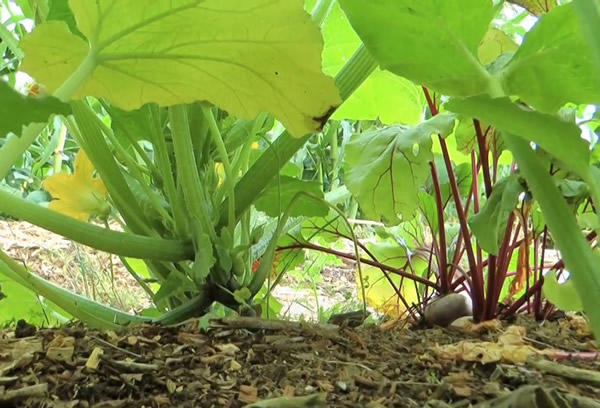Starting a Survival Garden
April 23, 2013

Part of being prepared for long term economic depression or future natural disasters is learning the skills to provide for your own needs so you are not dependent on the system. One of the areas to consider is your need of healthy food. I have learned over the years that although supplies of food are important, you need to be able to replace them on a yearly basis to continue to survive. The way to do this is plant a survival garden and practice growing food and drying or canning it.
Even if you have no interest now in growing your own food, there are methods you can start now so your garden area will produce delicious produce for you when you do need it. In most survival situations, buying fertilizer will not be an option, either because it will not be available or will be too expensive to trade for or purchase. What you want is a system that doesn't need commercial fertilizer.
The other aspect of a garden that you need to consider is water. In most climates, the growing season is quite dry and plants need watering at least once a week to survive. Without power and a private source of water, you will not be able to haul in water to water your garden in a practical way. To achieve a garden that requires little or no watering will require some planning and effort.
To have all these things, you will need to cover and build up a compost and mulch layer over your garden area. Most people have grass growing where they would like their garden. The easiest way to deal with this is to cover the grass with newspaper several layers thick and cover them with a thick mulch 4-6 inches thick. It is best to be resourceful. Here are some suggestions things that will work as a mulch.
If you have local tree service companies, call them and ask for a delivery of wood chips or use your own or a borrowed chipper and chip limbs and fresh leaves. Collect grass clippings or leaves. You can use weed-free hay or straw. Grow plants that can help provide an onsite resource for a mulch covering. The best material to use is chipped up tree parts as they will last the longest and hold water for you, but use what you have. If you are using something other than wood chips, you will want to keep adding additional mulch each year to keep the weeds and grass down. The best time to apply mulch is in the fall if you are actively using your garden area for growing food or flowers.
When you are actively using your garden, you will need to add compost to it each year to provide the needed nutrients to the mulch and soil. Within a few years, you will be able to plant right in the mulch and your plants will grow very well. Every time it rains, compost tea is being deposited into the soil. If you have access to any farm animals, mix the manure with sawdust or straw and add it as mulch compost as a layer over your garden or orchard. When you starting using your garden, you may need to use an organic fertilizer as a supplement for the nitrogen used in breaking down the wood chips. A good source of nitrogen is blood meal. Don't till or mix your mulch or soil, just add a layer on top each year. Overtime you will be able to get a higher and higher yield with less and less input.
To keep your garden going each year, you will want to use non-hybrid seeds that you can save each year and use to plant next years' crop. Research and practice seed saving techniques now so you will be ready when you need to use them.
Having a garden is a wonderful addition to your groceries and can save your life in the future when the problem of buying and selling will be a serious one.

